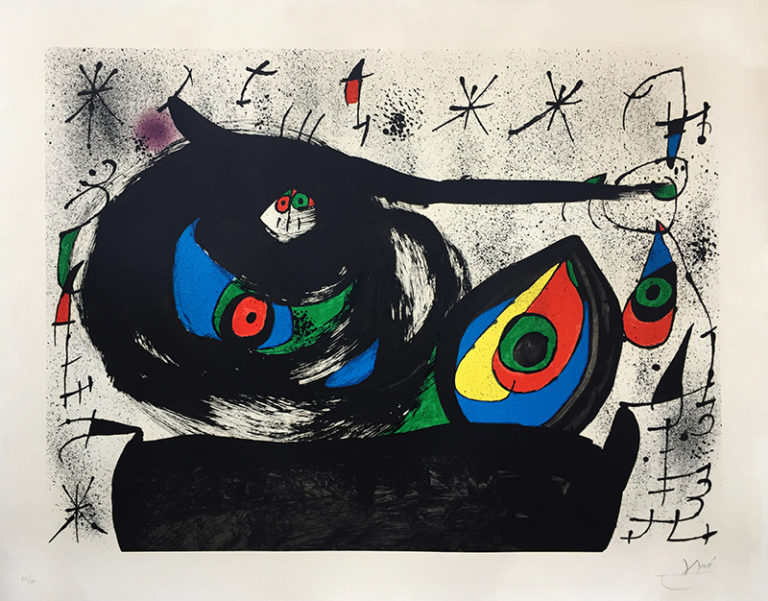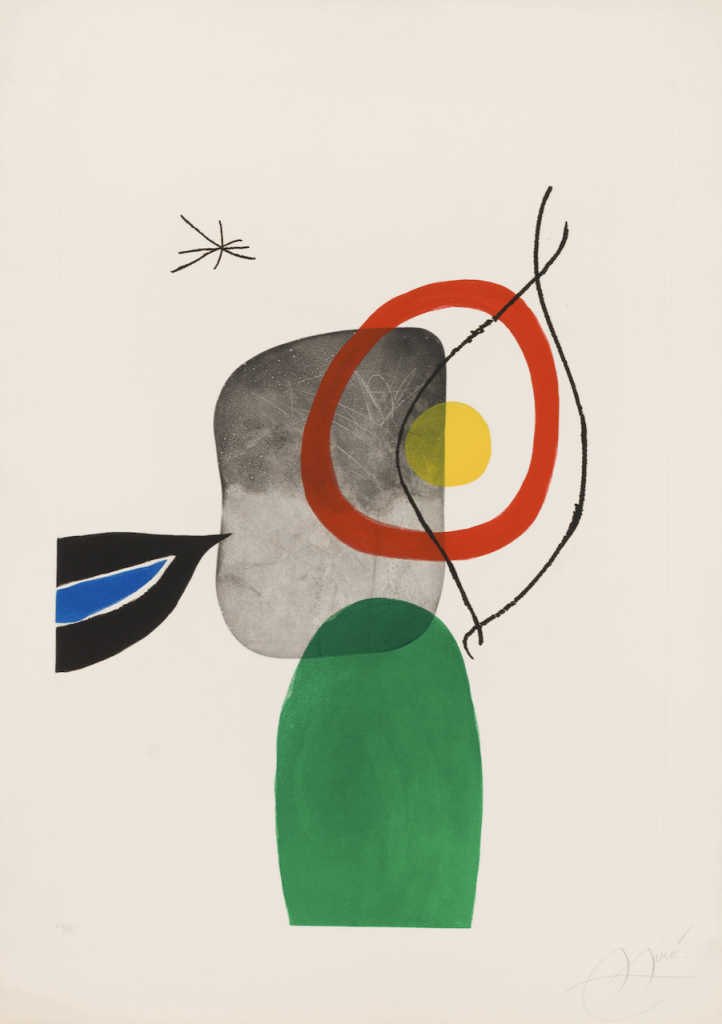Joan Miro’s Adventures in Printmaking
French writer Michel Leiris described Joan Miro prints as a “kaleidoscopic game of infinite possibilities”. Indeed, this Spanish artist’s work was full of curiosity that could never be sated solely by oil on a canvas.

Miro’s career spanned an incredible seven decades, with his repertoire mostly consisting of prints, but also a range of tapestry work, ceramic work and sculpture. Like his peer and compatriot Pablo Picasso, Joan Miro was most dedicated to printmaking and completed over 2,000 works in the medium. His calligraphic lines – such a distinctive feature of his artwork – particularly lent themselves to graphic pieces. He was able to pull apart proofs and rearrange the separate parts together in new patterns, adding bold accents of colour in crayon. Sometimes he would create glyph-like marks in India ink, and write highly detailed instructions to the printer. He embraced experimentation and accident, whilst also revelling in the methodical and controlled.
Joan Miro prints for literature have been described as ‘fine works of art in their own right’
Born in Barcelona in 1893, Miro was the son of a watchmaker. As an adult in the early 1920s he moved to Paris and quickly became involved in the Surrealist movement. He was also close to a broad mix of avant-garde writers at this time, including Antonin Artaud, Paul Eluard, Max Jacob, André Breton and Tristan Tzara.

Miro’s first prints were illustrations for Tzara’s 1930 book of poems entitled “L’arbre des Voyageurs”. He was inspired by a host of literary sources, particularly Stephen Spender’s poem, “Fraternity”, Alfred Jarry’s play “Ubu Roi” and the “Canticle of the Sun”, a medieval, mystical text by St Francis of Assisi.
Miro’s key collaborations and printing techniques
In simple terms, Joan Miro prints can be roughly divided into three categories, notable by the three techniques he used: intaglio (essentially drypoint and etching), carborundum and lithograph. For each of them he worked closely with a number of respected printing ateliers including Roger Lacourière, a master in intaglio.
A particularly successful collaboration between Miro and Lacourière was the 1933 drypoint “Daphnis & Chloé” in which a goatherd playing a reed-pipe entices two female bathers to rise up out of the sea. Miro’s lines are deliberately very soft, and swirl around to mimic the lyrics of a tune. It’s worth mentioning however that Miro’s approach to the medium is rather different to Picasso’s. Where Miro was happiest working within the long, established tradition of European printmaking, Picasso made up his own rules. Indeed, often he would add nail varnish and suet to his prints for more dramatic effect.

Miro started work on his carborundum prints during the latter part of the 1960s, representing the culmination of his graphic work. His carborundum pieces involved a type of engraving, in which an abrasive ground called carborundum (or silicon carbide, more exactly) was mixed with a binding agent and applied to a printing plate. The final prints tend to have a slightly course, velvety surface which gives them a particularly rich texture.
